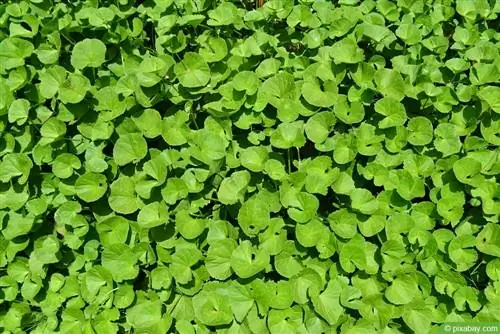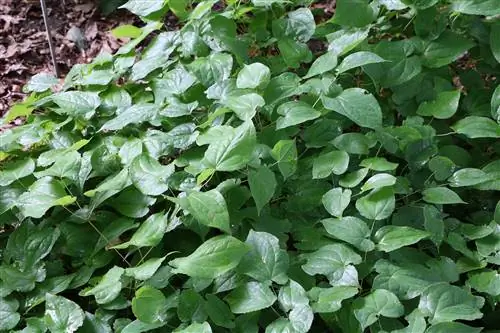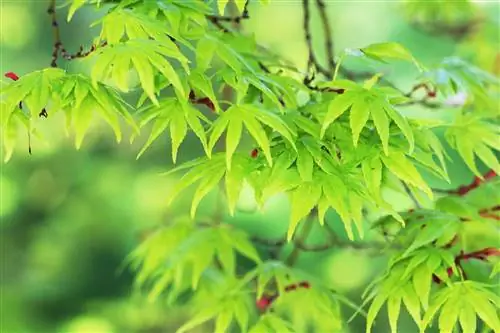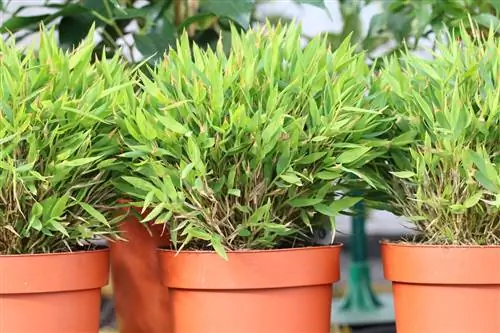- Author admin [email protected].
- Public 2023-12-17 03:39.
- Last modified 2025-01-24 12:45.
Gotu Kola is a tropical or subtropical plant from the umbelliferous family. It is therefore relatively closely related to herbs that are commonly found in our country, such as dill, anise or coriander. The official botanical name is Centella asiatica. Colloquially we often talk about tiger grass, Indian pennywort or Asian pennywort. In Asia, the plant plays a relatively large role in medicine as a medicinal herb. It is said to relieve psoriasis and acne, accelerate wound healing, and help with depressive moods, difficulty concentrating and stomach problems. In Europe the herb is traded as a superfood. The reason for this is probably the high proportion of minerals and vitamins it contains.
Profile
- Botanical name: Centella asiatica
- Asian name: Gotu Kola
- Origin: Asia
- Distribution area: Tropics and subtropics
- Flowering period: June to August
- Harvest time: May to September
- Uses: medicinal herb, spice herb
Tiger grass needs a warm, preferably swampy environment in order to grow and thrive. Under good conditions it reaches a height of ten to 20 centimeters. Since the perennial plant is not hardy, but on the contrary is very sensitive to frost, it generally cannot be grown outdoors permanently in Central Europe. It therefore needs to be overwintered in a warm environment.
Sowing / Cultivation
The Indian pennywort can generally be grown from seeds. However, this not only requires a lot of patience, but also some very specific conditions. These include:
- an ambient temperature of around 20 degrees Celsius
- a generally very humid environment
- an extremely loose soil
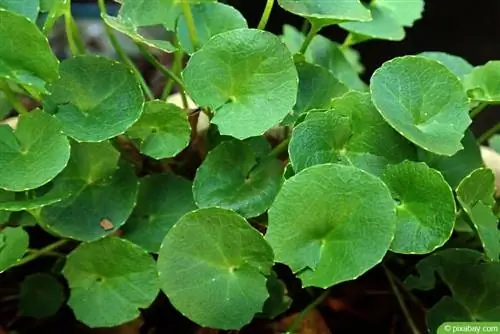
The seeds are best sown in planting containers that have a minimum depth of around ten centimeters. All peat-containing substrates are suitable as growing soil. They should be mixed with water-draining materials such as expanded clay or pumice stone. The individual seeds must not be pressed deeper than a maximum of one centimeter into the substrate. The reason for this is that the seeds absolutely need light to germinate. The growing substrate must be kept permanently moist and must not dry out under any circumstances.
Note:
It can take a lot of time before the seeds of the plant actually begin to germinate. It takes at least several weeks, but it could also be a few months.
Floor
If the Asian pennywort is removed from the potting soil after cultivation, it needs soil that is as loose and very nutrient-rich as possible. This must be consistently moist or should be able to retain moisture well. However, it is important to avoid waterlogging. In most cases, if the soil is very clayey, a drainage layer must be incorporated to drain the water away. For example, pebbles, lava, pumice or pumice stone are suitable for this.
Tip:
Clayey soil should always be mixed with sand, which increases its water permeability enormously. Under certain circumstances you can save the drainage layer.
Fertilize
Like any other plant, Centella asiatica needs nutrients to develop. As a rule, you cannot avoid fertilizing both when growing outdoors and when cultivating in a planter. In spring and summer, it is recommended to apply fertilizer every six to eight weeks. The fertilizer used should have a relatively high proportion of nitrogen. Since most of the plant is intended to be consumed, you should only use organic liquid fertilizer. However, there is no need to fertilize during the winter or overwintering.
Tip:
If the edges of the leaves turn yellow, a fertilizer specially enriched with nutrients should be used instead of pure organic fertilizer.
Pouring
The name “Indian pennywort” already suggests it: the plant likes and needs moisture. As part of care, special attention must therefore be paid to regular water supply. Regardless of whether the pennywort is grown in the garden or on the balcony - the soil must never dry out. If possible, the surface of the earth should not dry out. The plants react to drought with enormous stress, which often causes the leaves to yellow and fall off. Watering should always be done directly in the root area. Ideally, collected rainwater is used for this purpose. The water should not be too old and should have a temperature of around 20 degrees Celsius.
Diseases and pests

If the care is correct and, above all, the site conditions are correct, there is usually no fear of pest infestation or disease with Gotu Kola. In this respect, the plant is relatively robust and resilient, even in our latitudes. If anything, you are usually dealing with an infestation of blood or mealybugs. In most cases they settle on the undersides of the leaves. It is therefore recommended to check the undersides of the leaves regularly. This can be done every now and then when watering, for example. The lice do not pose a serious threat to an otherwise he althy plant. However, it is still a good idea to remove them. It makes sense, for example, to spray them with a soap solution. As a rule, such a solution reliably ensures that the pests disappear again very quickly.
Location
Tiger grass generally likes it warm, but does not cope well with direct sunlight. The location should therefore be semi-shady to shady. A shady location in the immediate vicinity of a garden pond has proven to be almost perfect. The reason for this is not least that the plant consistently needs a moist environment. Tiger grass is therefore also perfect for planting on the banks of a garden pond. If you don't want to grow it in the garden but would rather grow it on a balcony or terrace, you can of course do so. However, only shady northern sides are suitable for this. On the south side of the building, the often very strong sunlight can cause the leaves of the plant to literally burn.
Wintering
As already mentioned, tiger grass is perennial, but not winter-proof. The plant generally tolerates sub-zero temperatures, but these should not be too deep and should not last for too long. In general, it can be said that the grass can cope with temperatures of up to a maximum of minus four degrees Celsius - provided it is only exposed to these temperatures for a day or two. With this in mind, it is clear that Centella asiatica needs to be overwintered. If the herb was grown directly in the garden, this means that it must be dug up and brought inside. Under no circumstances should the roots be damaged when digging. It is best to dig up the plant with a lot of soil. It is then repotted into a planter and placed in a location that is as bright as possible but not too warm.
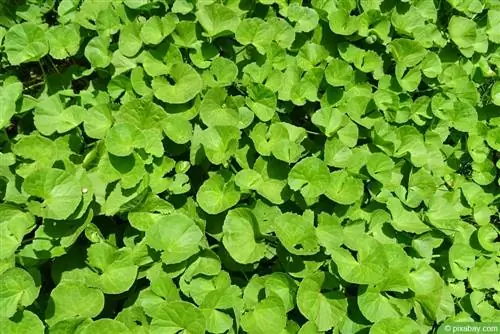
At an ambient temperature of around ten degrees Celsius, Indian pennywort feels right at home during the winter months. However, under no circumstances should it be left in the dark. Depending on the frost conditions, it makes sense to start wintering in mid to late October. Tiger grass cultivated in planters must also be brought through the winter in this way. As soon as there is no longer any risk of frost in the new year, he can go outside again.be transported directly into the garden.
Usage
In Europe, Indian pennywort is used almost exclusively as an herb. In the meantime, it has established itself relatively well as a superfood. As a medicinal herb it has practically no importance in this country. At best, individual Ayurvedic centers work with him. Incidentally, only the leaves of the plant are used. Gotu Kola is extremely aromatic, but always has a rather bitter aftertaste. The combination with salads or herb curds is ideal. To do this, the leaves are cut as small as possible. Of course, they must first be washed well with cold water. Even with perfect care and the best possible location, Centella asiatica does not always turn out to be a superfood. One of the peculiarities of this species is that its active ingredient and, above all, its mineral content varies considerably from plant to plant. Whether Gotu Kola actually does something is largely a matter of luck.

